当前位置:
X-MOL 学术
›
Chem. Mater.
›
论文详情
Our official English website, www.x-mol.net, welcomes your
feedback! (Note: you will need to create a separate account there.)
Synthesis and characterization of vacancy-doped neodymium telluride for thermoelectric applications.
Chemistry of Materials ( IF 7.2 ) Pub Date : 2019-06-11 , DOI: 10.1021/acs.chemmater.9b00964
Steven J Gomez 1, 2 , Dean Cheikh 1 , Trinh Vo 1 , Paul Von Allmen 1 , Kathleen Lee 1 , Max Wood 3 , G Jeff Snyder 3 , Bruce S Dunn 2 , Jean-Pierre Fleurial 1 , Sabah K Bux 1
Chemistry of Materials ( IF 7.2 ) Pub Date : 2019-06-11 , DOI: 10.1021/acs.chemmater.9b00964
Steven J Gomez 1, 2 , Dean Cheikh 1 , Trinh Vo 1 , Paul Von Allmen 1 , Kathleen Lee 1 , Max Wood 3 , G Jeff Snyder 3 , Bruce S Dunn 2 , Jean-Pierre Fleurial 1 , Sabah K Bux 1
Affiliation
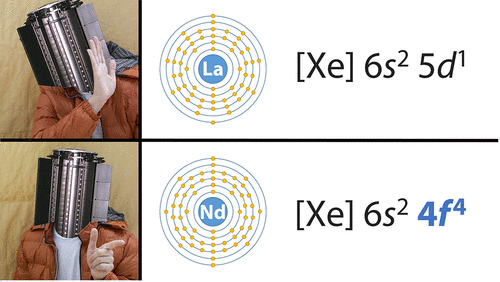
|
Thermoelectric materials exhibit a voltage under an applied thermal gradient and are the heart of radioisotope thermoelectric generators (RTGs), which are the main power system for space missions such as Voyager I, Voyager II, and the Mars Curiosity rover. However, materials currently in use enable only modest thermal-to-electrical conversion efficiencies near 6.5% at the system level, warranting the development of material systems with improved thermoelectric performance. Previous work has demonstrated large thermoelectric figures of merit for lanthanum telluride (La3-x Te4), a high-temperature n-type material, achieving a peak zT value of 1.1 at 1275 K at an optimum cation vacancy concentration. Here we present an investigation of the thermoelectric properties of neodymium telluride (Nd3-x Te4), another rare-earth telluride with a similar structure to La3-x Te4. Density functional theory (DFT) calculations predicted a significant increase in the Seebeck coefficient over La3-x Te4 at equivalent vacancy concentrations due to an increased density of states (DOS) near the Fermi level from the 4f electrons of Nd. The high temperature electrical resistivity, Seebeck coefficient, and thermal conductivity were measured for Nd3-x Te4 at various carrier concentrations. These measurements were compared to La3-x Te4 in order to elucidate the impact of the four 4f electrons of Nd on the transport properties of Nd3-x Te4. A zT of 1.2 was achieved at 1273 K for Nd2.78Te4, which is a 10% improvement over that of La2.74Te4.
中文翻译:

用于热电应用的空位掺杂碲化钕的合成与表征。
热电材料在施加的热梯度下显示出电压,并且是放射性同位素热电发生器(RTG)的心脏,后者是诸如Voyager I,Voyager II和Mars Curiosity流浪者等太空飞行任务的主要动力系统。但是,当前使用的材料在系统级别只能实现接近6.5%的适度热电转换效率,从而保证了开发具有改善的热电性能的材料系统。先前的工作已经证明了碲化镧(La3-x Te4)是一种高温n型材料,具有较大的热电性能,在最佳阳离子空位浓度下,在1275 K时可达到1.1的峰值zT值。在这里,我们对碲化钕(Nd3-x Te4)的热电性能进行了研究,另一稀土碲化物,具有与La3-x Te4相似的结构。密度泛函理论(DFT)计算预测,在空位浓度相同的情况下,塞贝克系数将比La3-x Te4显着增加,这是由于Nd的4f电子在费米能级附近增加了态密度(DOS)。在各种载流子浓度下,测量Nd3-x Te4的高温电阻率,塞贝克系数和热导率。将这些测量值与La3-x Te4进行了比较,以阐明Nd4-x Te4的四个4f电子对Nd3-x Te4传输性质的影响。Nd2.78Te4在1273 K时的zT为1.2,比La2.74Te4的zT提高了10%。密度泛函理论(DFT)计算预测,在空位浓度相同的情况下,塞贝克系数将比La3-x Te4显着增加,这是由于Nd的4f电子在费米能级附近增加了态密度(DOS)。在各种载流子浓度下,测量Nd3-x Te4的高温电阻率,塞贝克系数和热导率。将这些测量值与La3-x Te4进行了比较,以阐明Nd4-x Te4的四个4f电子对Nd3-x Te4传输性质的影响。Nd2.78Te4在1273 K时的zT为1.2,比La2.74Te4的zT提高了10%。密度泛函理论(DFT)计算预测,在空位浓度相同的情况下,塞贝克系数将比La3-x Te4显着增加,这是由于Nd的4f电子在费米能级附近增加了态密度(DOS)。在各种载流子浓度下,测量Nd3-x Te4的高温电阻率,塞贝克系数和热导率。将这些测量值与La3-x Te4进行了比较,以阐明Nd4-x Te4的四个4f电子对Nd3-x Te4传输性质的影响。Nd2.78Te4在1273 K时的zT为1.2,比La2.74Te4的zT提高了10%。在各种载流子浓度下,测量Nd3-x Te4的热导率和热导率。将这些测量值与La3-x Te4进行了比较,以阐明Nd4-x Te4的四个4f电子对Nd3-x Te4传输性质的影响。Nd2.78Te4在1273 K时的zT为1.2,比La2.74Te4的zT提高了10%。在各种载流子浓度下,测量Nd3-x Te4的热导率和热导率。将这些测量值与La3-x Te4进行了比较,以阐明Nd4-x Te4的四个4f电子对Nd3-x Te4传输性质的影响。Nd2.78Te4在1273 K时的zT为1.2,比La2.74Te4的zT提高了10%。
更新日期:2019-06-11
中文翻译:

用于热电应用的空位掺杂碲化钕的合成与表征。
热电材料在施加的热梯度下显示出电压,并且是放射性同位素热电发生器(RTG)的心脏,后者是诸如Voyager I,Voyager II和Mars Curiosity流浪者等太空飞行任务的主要动力系统。但是,当前使用的材料在系统级别只能实现接近6.5%的适度热电转换效率,从而保证了开发具有改善的热电性能的材料系统。先前的工作已经证明了碲化镧(La3-x Te4)是一种高温n型材料,具有较大的热电性能,在最佳阳离子空位浓度下,在1275 K时可达到1.1的峰值zT值。在这里,我们对碲化钕(Nd3-x Te4)的热电性能进行了研究,另一稀土碲化物,具有与La3-x Te4相似的结构。密度泛函理论(DFT)计算预测,在空位浓度相同的情况下,塞贝克系数将比La3-x Te4显着增加,这是由于Nd的4f电子在费米能级附近增加了态密度(DOS)。在各种载流子浓度下,测量Nd3-x Te4的高温电阻率,塞贝克系数和热导率。将这些测量值与La3-x Te4进行了比较,以阐明Nd4-x Te4的四个4f电子对Nd3-x Te4传输性质的影响。Nd2.78Te4在1273 K时的zT为1.2,比La2.74Te4的zT提高了10%。密度泛函理论(DFT)计算预测,在空位浓度相同的情况下,塞贝克系数将比La3-x Te4显着增加,这是由于Nd的4f电子在费米能级附近增加了态密度(DOS)。在各种载流子浓度下,测量Nd3-x Te4的高温电阻率,塞贝克系数和热导率。将这些测量值与La3-x Te4进行了比较,以阐明Nd4-x Te4的四个4f电子对Nd3-x Te4传输性质的影响。Nd2.78Te4在1273 K时的zT为1.2,比La2.74Te4的zT提高了10%。密度泛函理论(DFT)计算预测,在空位浓度相同的情况下,塞贝克系数将比La3-x Te4显着增加,这是由于Nd的4f电子在费米能级附近增加了态密度(DOS)。在各种载流子浓度下,测量Nd3-x Te4的高温电阻率,塞贝克系数和热导率。将这些测量值与La3-x Te4进行了比较,以阐明Nd4-x Te4的四个4f电子对Nd3-x Te4传输性质的影响。Nd2.78Te4在1273 K时的zT为1.2,比La2.74Te4的zT提高了10%。在各种载流子浓度下,测量Nd3-x Te4的热导率和热导率。将这些测量值与La3-x Te4进行了比较,以阐明Nd4-x Te4的四个4f电子对Nd3-x Te4传输性质的影响。Nd2.78Te4在1273 K时的zT为1.2,比La2.74Te4的zT提高了10%。在各种载流子浓度下,测量Nd3-x Te4的热导率和热导率。将这些测量值与La3-x Te4进行了比较,以阐明Nd4-x Te4的四个4f电子对Nd3-x Te4传输性质的影响。Nd2.78Te4在1273 K时的zT为1.2,比La2.74Te4的zT提高了10%。


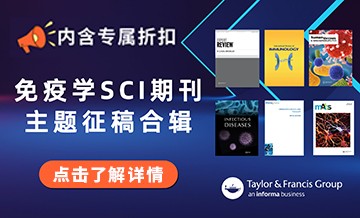



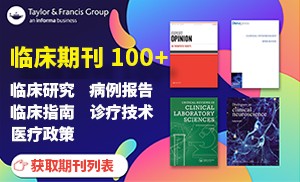



















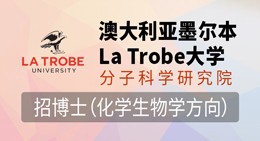




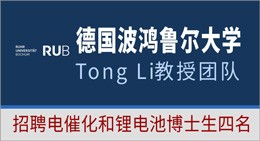







 京公网安备 11010802027423号
京公网安备 11010802027423号